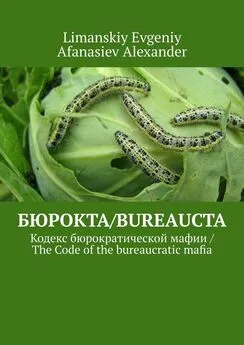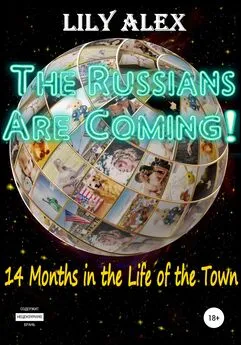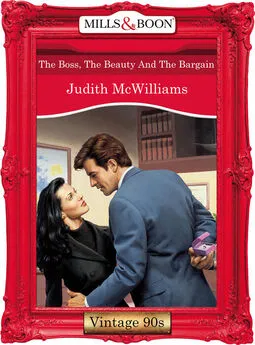Elena Vasilevskaya - Suprematistic QR code: The Essence of the Legend
- Название:Suprematistic QR code: The Essence of the Legend
- Автор:
- Жанр:
- Издательство:неизвестно
- Год:2021
- ISBN:нет данных
- Рейтинг:
- Избранное:Добавить в избранное
-
Отзывы:
-
Ваша оценка:
Elena Vasilevskaya - Suprematistic QR code: The Essence of the Legend краткое содержание
Suprematistic QR code: The Essence of the Legend - читать онлайн бесплатно ознакомительный отрывок
Интервал:
Закладка:
As Malevich’s painting were neither accepted nor appreciated by the public, he fell into psychological depression. It influenced the mood of his creations at that time. But the leadership qualities of K. Malevich strengthened the desires to create, to move further, to self-express, to oppose to everything.
Either the desire for new trends or monitoring new things in art (for example, graphic drawings of the popular and often published in magazines at that time Aubrey Beardsley) left an imprint on the artist’s work.
Studying at the I. Rerberg’s School (from the fall of 1905 to 1910) was important for Malevich’s style. Rerberg’s teaching system was distinguished as flexible, comprehensive, oriented on the interests in new trends in painting. Despite the years of study here Malevich later preferred to write about himself that he was self-taught.
Since 1907 to 1910 Malevich regularly exhibited his works (XIV–XVII exhibitions of the Association). Wassily Kandinsky, Mikhail Larionov, Vladimir and David Burliuki, Natalia Goncharova, Alexander Shevchenko, Ivan Klyunkovy, etc. were among the other exhibitors.
Acquaintance with Ivan Klyunkov who took the pseudonym Klyun (1873–1943) soon grew into close communication. They became friends with Malevich who had moved with his family to Moscow and settled in Klyun’s house. Klyun used features of the canonized images and iconographic features (Orthodox) and it influenced Malevich’s style and even fell into the plots of his paintings from different periods. Elements of fresco painting, golden ink (the icon technique), ornamentation, symmetry are reflected in the work “Sketch for Fresco Painting (Portrait of I. Klyunkov)” (1907, State Russian Museum, St. Petersburg). In particular, “The Improved Portrait of a Builder (Portrait of I. Klyunkov)” (1913, State Russian Museum, St. Petersburg) formed the basis of Malevich’s cubo-futuristic style. Pattern, rhythm, flatness are reflected in the painting “The Shroud” (1908, State Tretyakov Gallery, Moscow).
The motive of European Art Nouveau is presented in the work “Rest. Society in Top Hats” (1908, State Russian Museum, St. Petersburg).
In 1909 Malevich married for the second time. His wife was the children’s writer Sofia Rafalovich (?–1925). It was important that the new father-in-law had a country house in Nemchinovka, which became a significant place for the artist until the end of his life. He tried to spend all his free time in Nemchinovka and its surroundings.
Malevich participated in a series of exhibitions which began in December 1910 when the extravagant organizer Mikhail Larionov invited the artist to the first “Jack of Diamonds” exhibition (December 1910 – January 1911). Since then he regularly took part in the shocking exhibitions of left artists who were representatives of Russian pre-revolutionary modernism (Cezanneism, Primitivism, Сubism). “Self-portrait” (1910, State Tretyakov Gallery, Moscow), “Still Life” (1910, State Russian Museum, St. Petersburg) are the works of this period. At the same time the artist participated in the exhibition called “Union of Youth” (St. Petersburg, April – May 1911). The next exhibition was in Moscow. Its head was the same (Larionov), and its title is defiant – “Donkey’s Tail” (March – April 1912). Here Malevich exhibited over 20 works – “Argentine Polka” (1911, private collection, New York), “Bather” (1911, Stedelic Museum, Amsterdam), “Gardener” (1911, Stedelic Museum, Amsterdam), etc.
When at the end of his life Malevich was thinking about his art, he wrote: “I stayed on the side of the peasant art and began to draw in a primitive spirit. At first, in the first period, I imitated icon painting. The second period was purely “labor”: I drew the working peasants in harvest, threshing. Third period: I approached the “suburban genre” (carpenters, gardeners, summer cottages, bathers). The fourth period – “city signs” (floor polishers, maids, footmen, employees)” 4 4 Aleksandra S. Shaktskikh, “ Kazimir Malevich” [Kazimir Malevich]. Moscow, SLOVO Publ., 1996, p. 21.
. Malevich’s view on the origin of the religious icon was peculiarious. He considered it as the highest stage of “peasant art 5 5 Ibid, p. 26.
.”
The main feature of Malevich’s works of this period was his desire to perceive the objective environment as the sum of individual elements where each of them received its own light and shadow modeling with a textured solution. It could be powerful sculpting of space which was made with use of colored brushstroke. There were lined up, unnaturally large, anatomically consciously increased proportions of body parts in the system of technical design of planes with a clear outline.
Subconsciously the artist used the religious icon as a model to create a planar composition as a source of rich local color which found its place monumentality on frontal figures. The objects on Malevich’s canvases seemed to be carved out from curved metal sheets. They had a steel sheen of this material. The combination of clear boundaries and pictorial content becomes the basis for the construction of recognizable real male and female figures that were presented in profile or full face with a monumental and unemotional severity of features.
The peasant series of works included “Harvesting the Rye”, “The Reaper”, “The Carpenter”, “Peasant Woman with Buckets and a Child” (all 1912, Stedelijk Museum, Amsterdam), “Woman with Buckets” (1912, Museum of Modern Art, New York), “Morning after a Blizzard in the Country” (1912, Solomon R. Guggenheim Museum, New York). In the painting “The Head of a Peasant Girl” (1913, Stedelijk Museum, Amsterdam) Malevich moved away from human features into images where cylinders, geometric designs, organized according to a kind of logic, dominated. The works reflected both high scientific, technical development and the breakthrough of that time as a projection that builds a futuristic electro-mechanized cult with the Italian roots.
“The iron-steel-concrete landscapes of the moment genre were moved by the arrows of fast time.
War, sports, dreadnoughts, throats of rearing guns, mouths of death, cars, trams, rails, airplanes, wires, running words, sounds, motors, elevators, quick changes of places, intersections of the road of heaven and earth crossed below.
Telephones, meat muscles were replaced by iron-current traction. An iron-concrete skeleton through the sighs of gushin gasoline rushed gravity.
Here was a new shell, in which our body is chained, turning into a brain of steel” 6 6 Glushkova M., ed., “ Krasny Malevich: stat’i iz gazety “Anarhiya” [Red Malevich. Articles from the “Anarchy” newspaper]. Мoscow, Common place Publ., 2016, pp. 85–86.
, – wrote Malevich (author’s stanza).
Combining the discoveries of French Cubists and Italian Futurists the left painters gave birth to their own ism – Cubo-futurism which became a domestic trend in the avant-garde art. The movement of Malevich’s Cubo-futurism towards “non-objective” art was made because of the influence of poets (Velimir Khlebnikov, Alexei Kruchenykh, David Burliuk, Vasily Kamensky, Mikhail Matyushin (a man of versatile talents, musician, painter, writer) and his wife Elena Guro, who created Vladimir Mayakovsky innovative association “budetlyane” (from the Russian word form byt’ – ‘to be’)). The synthesis of images, words, music led to the emergence of mutually influencing and complementary artists, poets, actors, musicians who embodied their ideas in the scandalous collection “Slap in the Face of Public Taste”.
D. Merezhkovsky (poet, critic) said the following:
«1) “Futurism is the coming Boor, blasphemers, savages who dismembered the language.
A gang of hooligans, a band of savages, the all-deafening sound of a swindle, a naked savage, a hottentot in a bowler hat”.
2) “Futurism, Cubism are hysteria, futurism is the murder of the soul of the world, eternal femininity”.
3) “Replacement of reproduction by mechanical means, abomination and desolation…” 7 7 Glushkova M., ed. Krasnyj Malevich: stat’i iz gazety “Anarhiya” [Red Malevich. Articles from the “Anarchy” newspaper]. Мoscow, Common place Publ., 2016, pp. 51.
(author’s stanza).
The meaningless, illogical, abstruse things were declared to be main objects of reality. During this period Malevich wrote three works: “Dressing Box”, “Station Without Stopping” (both in 1913, State Tretyakov Gallery, Moscow), “Cow and Violin” (1913, State Russian Museum, St. Petersburg). These paintings had one common feature. They were painted on a wooden canvas which was made from the shelves of the bookcase. There was a lack of funds for everyday life and for the purchase of canvases in particular and then furniture was used.
“During his life Malevich did not receive even some of money at which one of his drawings was estimated later (tens of thousands dollars). There is no need to mention a painting that worths millions. Unfortunately for Malevich he continued the romantic tradition of the 19th century where “an unrecognized geniuses died in poverty.” It influenced the “chronological provincialism” of Russia for sure. In the 20th century the situation had changed in the rest of the world. Only Modigliani passed away early and did not see the material dimension of fame. Other great brothers – Matisse, Picasso, Chagall – were not only famous, but also fabulously rich” 8 8 Aleksandra S. Shaktskikh, “Kazimir Malevich” [Kazimir Malevich]. Moscow, SLOVO Publ., 1996, p. 16.
.
The author revealed the meaning of the painting “The Cow and the Violin” with an inscription on the back of the canvas (which was made from the bookshelf). It said “The alogical comparison of two forms – “cow and violin” – is a moment of struggle against logic, naturalness, bourgeois meaning and prejudices. K. Malevich” 9 9 Ibid, p. 32.
. “The Cow and the Violin” was the painting that ment the beginning of the concepts of Abstruse realism and Cubo-futuristic realism.
These three works were presented at the exhibition of the “Union of Youth”, which opened in November 1913 in St. Petersburg.
The Opera “Victory Over the Sun”
as a Reference to the “Black Square”
The idea to create an opera appeared at the “First All-Russian Congress of Futurists” in mid-July 1913 at Mikhail Matyushin’s dacha in Usikirko. It came after the decision to organize the “Budetlyanin” Theater in order to change traditional understanding of theater. The production of “Victory over the Sun” was a synthesis of the alogism of words, music and images. The title of the opera was based on the allegory of the eclipse. The authors saw in it the triumph of the new world, the power of reason over the elements which was different from the ideas of our ancestors who considered eclipse a bad messenger. The idea about the “victory” of technology and science over nature, which was a kind of hope to establish correct world order, was expressed. Two performances of “The World’s First Theater of Futurists” took place on December 3 and 5, 1913 in St. Petersburg’s Luna Park on Dekabristov St. (formerly Officerskaya St.). The author of the sketches was Kazimir Malevich. The text was written by Alexei Kruchenykh and Velimir Khlebnikov. The music was composed by Mikhail Matyushin.
“Victory over the Sun” told the story of the Budlyan strongmen who mercilessly destroyed all the generally accepted norms of common sense. They set out to conquer the sun. The fight against it ended with a complete victory of the Budelian strongmen who aimed primarily to cause a universal scandal and to realize the ideas of nihilism. To sum it up, they wanted victory over the old customary understanding of the sun as something elegant. At the end of the twentieth century this piece of art was called one of the first rock operas.
Читать дальшеИнтервал:
Закладка:

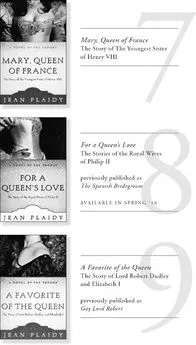
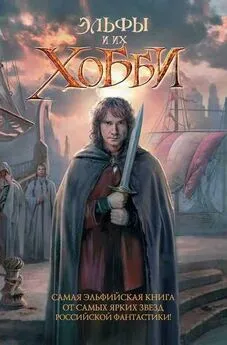
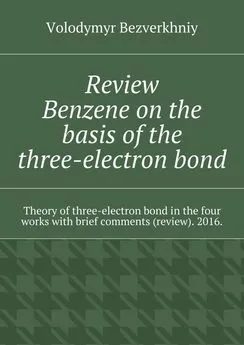
![Джеймс Купер - Пионеры, или У истоков Саскуиханны [The Pioneers, or The sources of the Susquehannah]](/books/1066142/dzhejms-kuper-pionery-ili-u-istokov-saskuihanny-t.webp)

